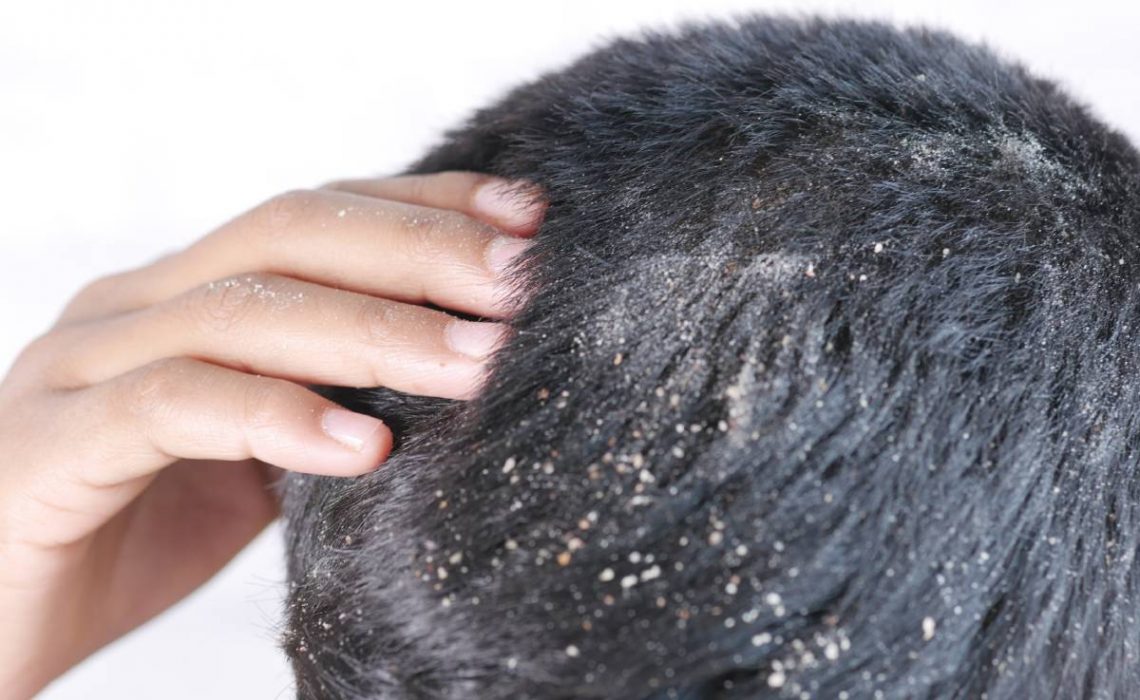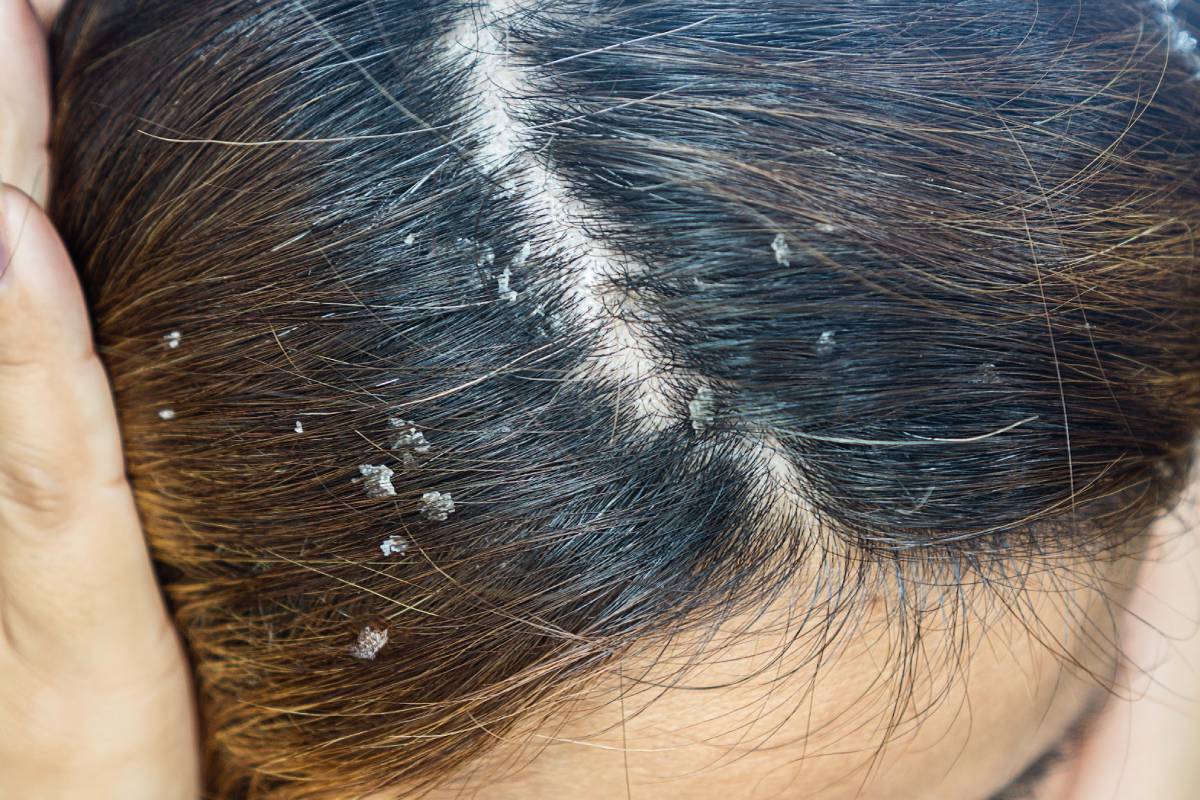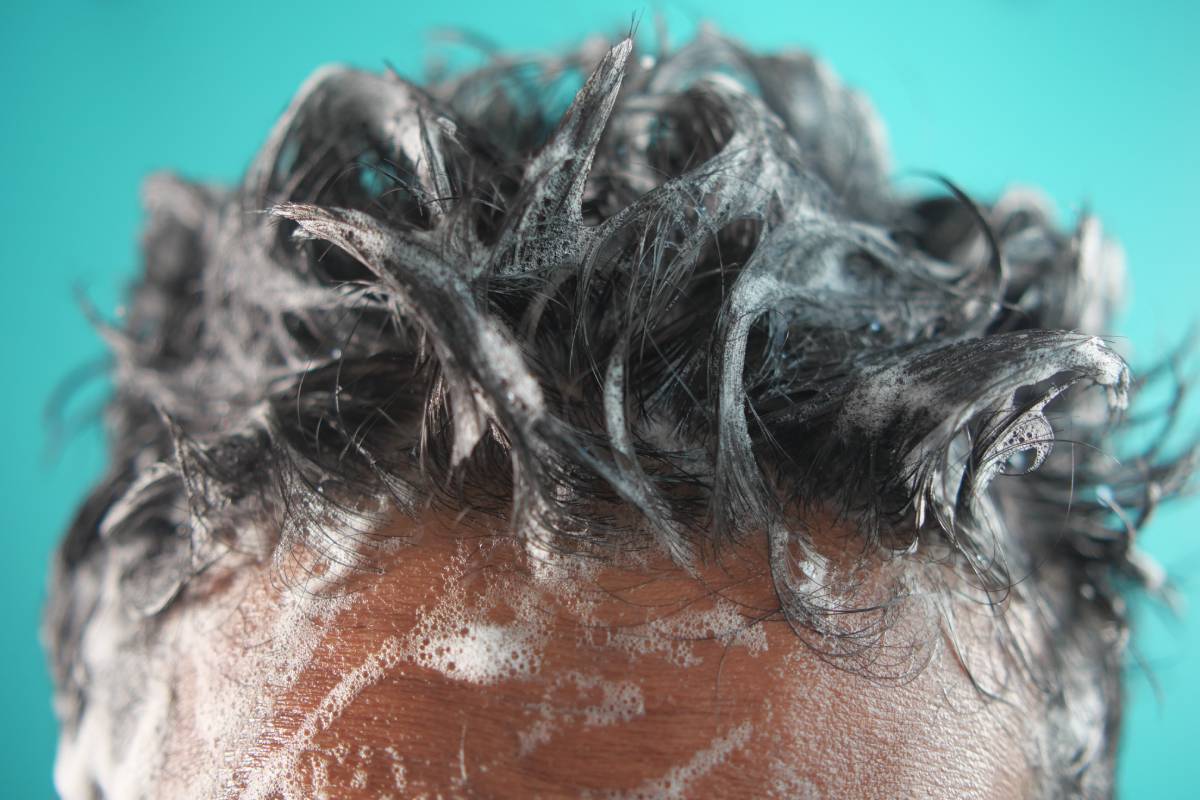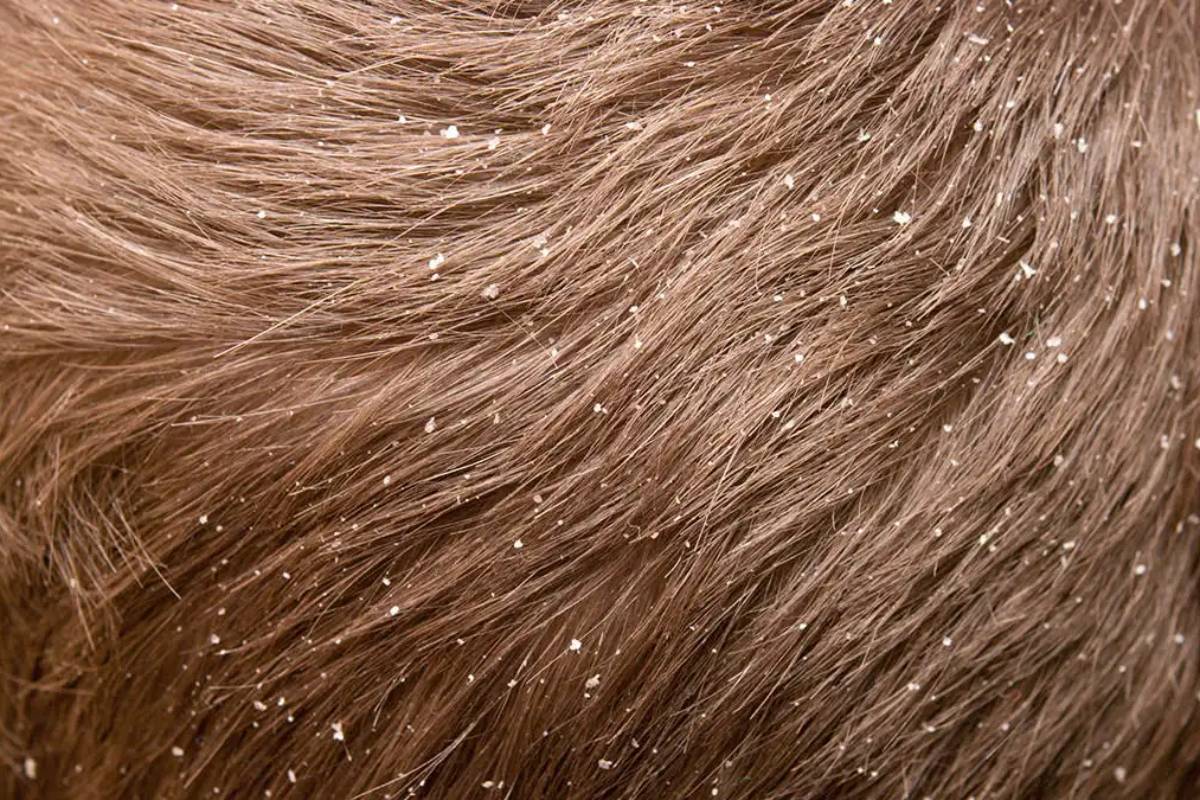
Dandruff, those pesky white flakes that sometimes dot our hair and shoulders, is a common scalp condition that affects millions worldwide. Despite its prevalence, dandruff’s exact cause can be elusive, often involving a complex interplay of factors. From dry skin to fungal overgrowth, dandruff’s origins are as diverse as the individuals it afflicts.
Understanding the nuances of dandruff is crucial for effective management and treatment. In this article, we’ll delve into the causes of dandruff, explore strategies for its prevention and treatment, and shed light on its potential connections to underlying health conditions.
What is dandruff?
Dandruff is a common skin condition that mainly affects the scalp. It occurs when the skin cells on the scalp renew themselves too quickly, leading to an excess buildup of dead skin cells. This buildup of dead skin cells then sheds from the scalp, appearing as white or yellowish flakes. Dandruff can be caused by various factors, including dry skin, oily skin, certain skin conditions like eczema or psoriasis, fungal infections like Malassezia, or sensitivity to hair care products. Symptoms of dandruff may include itching and flaking of the scalp, and while it is not typically harmful, it can be embarrassing, bothersome, and nasal congestion for those who experience it.

What is the main cause of dandruff?
The exact cause of dandruff isn’t fully understood, but it’s believed to involve a combination of factors. One major factor is the overgrowth of a naturally occurring fungus on the scalp called Malassezia. This fungus feeds on the oils secreted by hair follicles and scalp glands. In some people, the presence of Malassezia can irritate the scalp, leading to increased shedding of dead skin cells, which manifests as dandruff flakes.
Other factors that can contribute to dandruff include:
- Seborrheic dermatitis: A common skin condition characterized by red, itchy, and flaky skin, often affecting areas rich in oil glands, such as the scalp, face, and upper chest.
- Dry skin: Dry skin on the scalp can cause flakes similar in appearance to dandruff. It’s more common in cold, dry weather or with frequent washing and the use of harsh hair care products.
- Sensitivity to hair care products: Certain hair care products, such as shampoos, conditioners, or styling products, can irritate the scalp and lead to dandruff-like symptoms in some individuals.
- Diet and lifestyle factors: Poor diet, stress, hormonal changes, and certain medical conditions may also play a role in the development of dandruff.
While these factors contribute to dandruff, the specific cause can vary from person to person, and it may be a combination of several factors in many cases.

Should I wash my hair every day if I have dandruff?
Washing your hair every day may not necessarily be the best approach for managing dandruff, as it can strip the scalp of its natural oils and potentially exacerbate the condition. Here are some tips for washing your hair when you have dandruff:
- Use a medicated shampoo: Look for shampoos specifically formulated to treat dandruff, containing active ingredients like ketoconazole, selenium sulfide, coal tar, or zinc pyrithione. These ingredients help control the growth of the fungus Malassezia and reduce inflammation on the scalp.
- Shampoo regularly: Wash your hair regularly, but not necessarily every day. Aim for two to three times a week or as often as needed to keep your scalp clean and dandruff-free.
- Massage your scalp: When shampooing, gently massage your scalp with your fingertips to help loosen and remove dead skin cells and excess oil.
- Rinse thoroughly: Make sure to rinse your hair and scalp thoroughly after shampooing to remove any leftover shampoo residue, which can irritate the scalp.
- Avoid hot water: Use lukewarm water instead of hot water when washing your hair, as hot water can strip the scalp of its natural oils and further contribute to dryness and irritation.
- Moisturize: Use a conditioner or scalp moisturizer after shampooing to help hydrate the scalp and hair, especially if you have dry scalp along with dandruff.
- Avoid scratching: Try to resist the urge to scratch your scalp, as it can worsen irritation and inflammation. If your scalp feels itchy, try using a gentle anti-itch scalp treatment or applying a soothing scalp oil.
Remember that finding the right hair care routine for managing dandruff may require some trial and error. If over-the-counter dandruff shampoos don’t provide relief, or if your symptoms worsen, consult a dermatologist for further evaluation and treatment options.

How do you get rid of dandruff?
Getting rid of dandruff often involves a combination of regular hair care practices and using specialized dandruff treatments. Here are some steps you can take to help eliminate dandruff:
- Use medicated shampoos: Look for over-the-counter shampoos containing active ingredients such as:
- Ketoconazole
- Selenium sulfide
- Coal tar
- Zinc pyrithione
- Salicylic acid
- Tea tree oil
- Follow the instructions: Use the medicated shampoo according to the instructions on the label or as directed by your healthcare provider. Some shampoos may need to be used daily initially, then less frequently once dandruff is under control.
- Manage stress: Stress can exacerbate dandruff, so practising stress-reduction techniques such as meditation, yoga, or deep breathing exercises may be helpful.
- Maintain a healthy lifestyle: Eat a balanced diet, get regular exercise, and ensure you’re getting enough sleep, as these factors can also affect the health of your scalp and skin.
- Limit use of hair products: Some hair care products, such as styling gels and hairsprays, can contribute to dandruff. Try to limit their use or choose products labelled as “dandruff-friendly.”
- Consult a dermatologist: If over-the-counter dandruff shampoos don’t provide relief or if your symptoms worsen, consult a dermatologist for further evaluation and treatment options. They may recommend prescription-strength shampoos, topical treatments, or other therapies tailored to your specific needs.
Consistency and patience are key when treating dandruff, as it may take time to see improvement.
Can dandruff be a symptom of anything?
Yes, dandruff can sometimes be a symptom of underlying conditions or factors. While dandruff itself is not usually harmful, it can be associated with certain skin conditions or health issues. Some possible conditions or factors that may contribute to dandruff include:
- Seborrheic dermatitis: This is a common skin condition that causes red, itchy, and flaky skin, often affecting areas rich in oil glands, such as the scalp, face, and upper chest. Dandruff is a common symptom of seborrheic dermatitis.
- Psoriasis: Psoriasis is a chronic autoimmune condition characterized by red, scaly patches of skin. When psoriasis affects the scalp, it can cause dandruff-like flakes.
- Malassezia overgrowth: Dandruff can be caused or worsened by an overgrowth of a naturally occurring fungus called Malassezia on the scalp. This fungus feeds on the oils secreted by hair follicles and scalp glands.
- Dry skin: Dry skin on the scalp can lead to flakes similar in appearance to dandruff. This is more common in cold, dry weather or with frequent washing and the use of harsh hair care products.
- Contact dermatitis: Allergic reactions to hair care products or other substances that come into contact with the scalp can cause irritation and flaking, resembling dandruff.
- Hormonal changes: Hormonal fluctuations, such as those that occur during puberty, pregnancy, or menopause, can affect the skin’s oil production and contribute to dandruff.
- Stress: Stress can exacerbate certain skin conditions, including dandruff, by triggering or worsening inflammation.
- Other medical conditions: Certain medical conditions, such as HIV/AIDS, Parkinson’s disease, and certain neurological disorders, may be associated with dandruff as a secondary symptom.
It’s essential to consider the possibility of underlying conditions if dandruff persists despite proper treatment or if it is accompanied by other concerning symptoms. If you have persistent or severe dandruff, it’s advisable to consult a healthcare professional for an accurate diagnosis and appropriate treatment.
In conclusion
Dandruff may seem like a mere cosmetic nuisance, but its presence can signal underlying scalp issues or health concerns. By adopting a holistic approach to scalp care, including regular cleansing with medicated shampoos, moisturizing, and stress management, individuals can effectively manage and even prevent dandruff. However, for those grappling with persistent or severe dandruff, seeking professional medical advice is paramount.
Whether it’s seborrheic dermatitis, psoriasis, or another underlying condition, a dermatologist’s expertise can provide invaluable insights and tailored treatment plans. With proactive care and attention, individuals can banish those pesky flakes and restore their scalp to optimal health.

